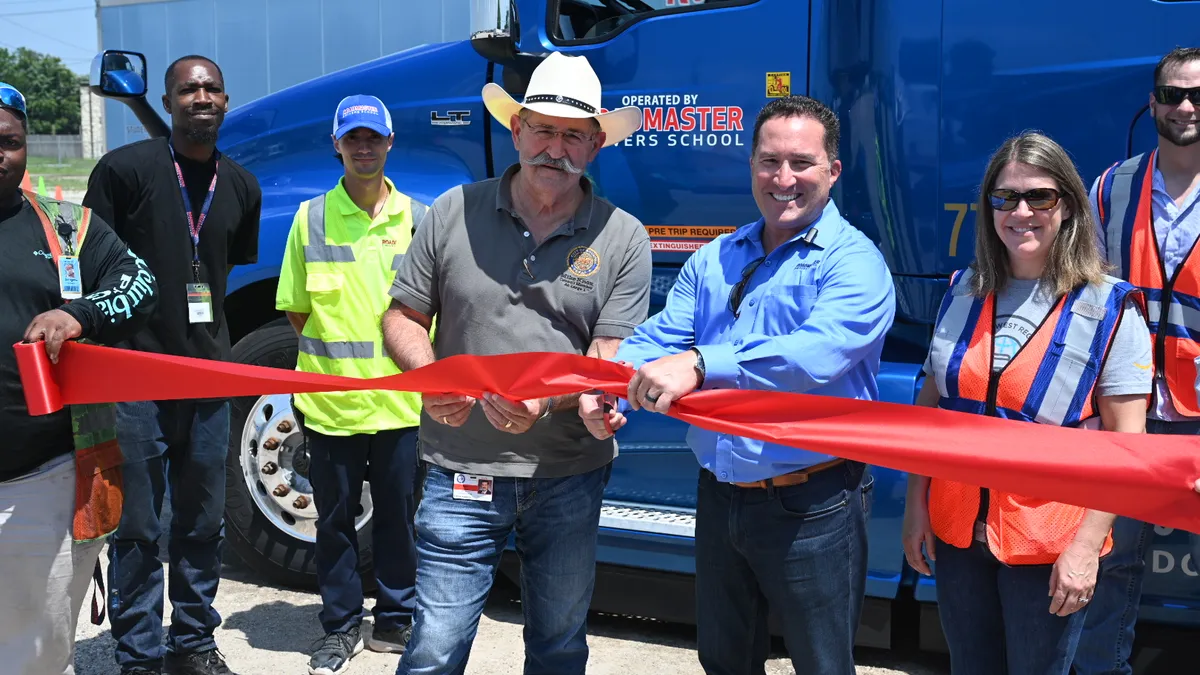Editor’s Note: Filling the Driver’s Seat is a series delving into fleets’ driver recruitment and retention strategies through the lens of the people leading the efforts. Know someone we should profile? Email [email protected].
As COVID-19 and the Great Recession took their toll on truck fleets amid skyrocketing freight demand in recent years, many companies immediately kicked recruitment efforts into overdrive.

Bob’s Discount Furniture first focused on its driver turnover, said Pete Sorrentino, senior vice president of distribution and logistics.
“We had to first fix retention before we went after recruiting,” Sorrentino said. “That was one of our biggest areas of opportunity. ... Once we fixed our retention, then we really pivoted into into our recruiting.”
The furniture retailer offered pay raises and relaxation rooms for drivers in distribution centers, among other initiatives to boost retention.
The company evaluated and increased pay, based on each market, among its private fleet of about 135 to 155 drivers. Bob’s compensates drivers for time spent in traffic or for extended periods spent away from home, and provides sign-on and referral bonuses, quarterly safety bonuses and other incentives.
“Time is money for the drivers. The drivers want to continue to make and earn a fair living. They don't make a fair living when those trucks are not moving,” Sorrentino said. “We evaluate that and make adjustments accordingly to ensure the drivers are making a fair living.”
Truck driver relaxation rooms offer coffee and snacks in each of Bob’s five distribution centers. It’s no small measure at a time when the trucking industry is having to lobby for legislation to require shippers to allow truck drivers hauling their freight to use their facilities’ restrooms.
Sorrentino, whose 25-plus years in supply chains included stints at Airborne Express, Office Depot and DHL, said refrigerators, sofas and refreshments are available around the clock to drivers, who he said often go underappreciated by the general public.
“We want drivers to feel as if they are a very important part of our workforce,” he said. “We go into our [distribution centers during the day], there’s a lot of activity. But at 2:00 in the morning, not a lot of activity, typically. We wanted to allow them to have that same experience.”
Other successful driver retention strategies include best practices such as running late-model equipment and stressing safety as a priority. The company’s executive team regularly visits teams in each market and invites drivers to appreciation dinners.
Part of Bob’s pandemic-era driver retention playbook might offer a solution for others in the industry as demand ebbs. As the market tanked in the early days of COVID-19, Bob’s avoided a last-resort cost-cutting measure — eliminating driver jobs — by bringing them into its warehouses to handle other tasks.
“It could be basic loading work, basic unloading work,” Sorrentino said. “We did not want to see our drivers be released, and we wanted to protect that workforce. It was a very valuable piece of our workforce across the board. So rather than let them walk or leave us we brought them in the warehouse and gave them warehouse work, and it was extremely successful.
“So the few times when we see the downturns and the seasonality kicking in on the low side, we find ways to keep them gainfully employed so that we can we can work around those flexes.”





















